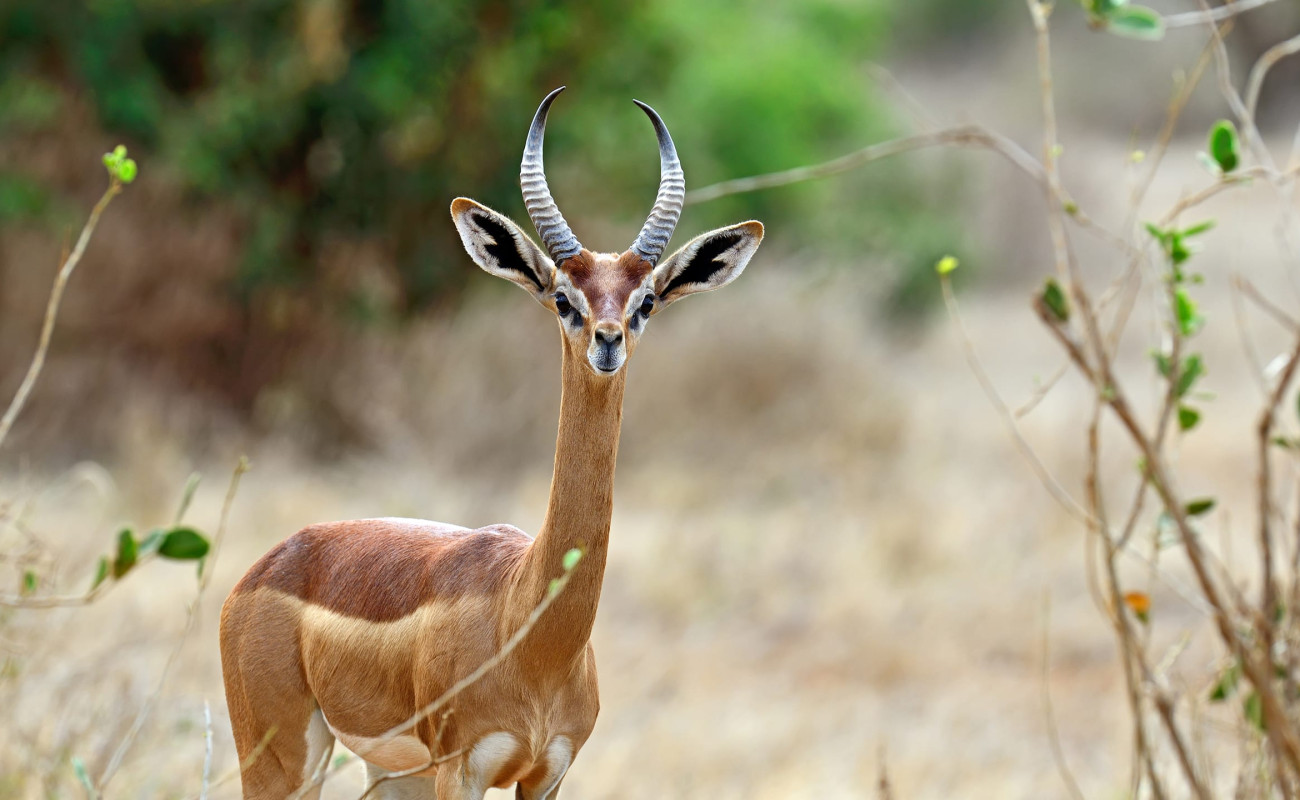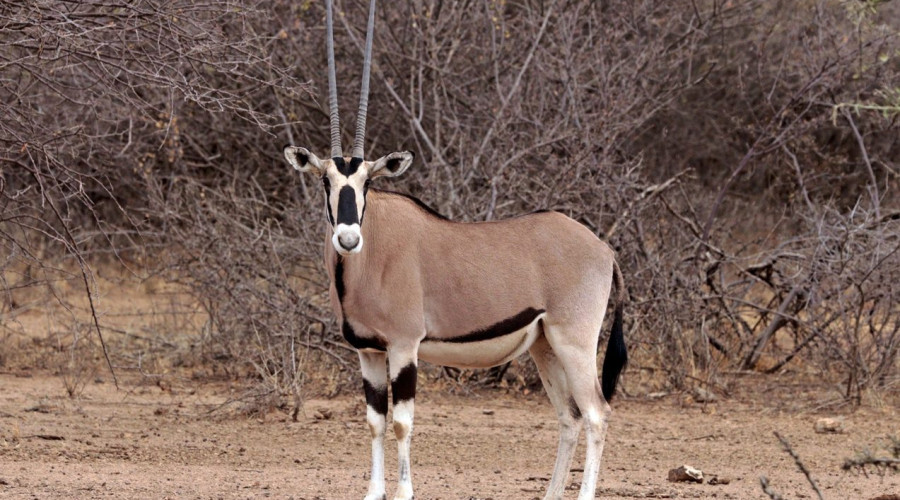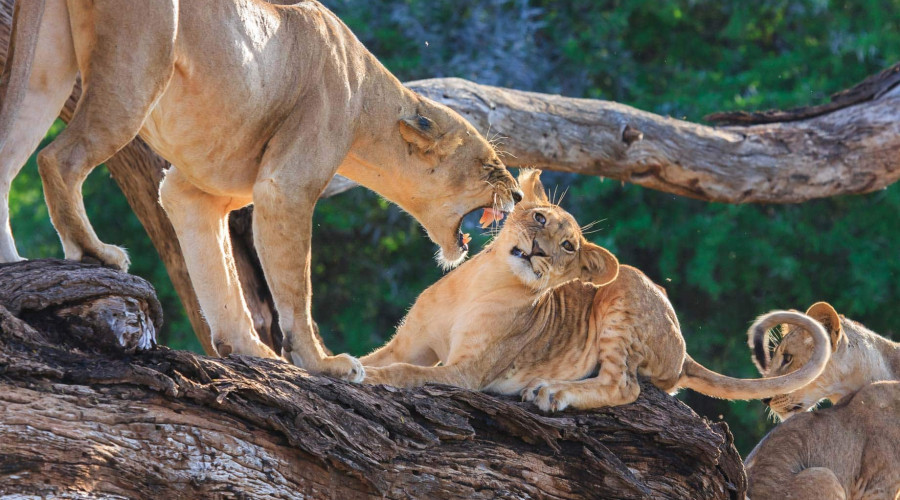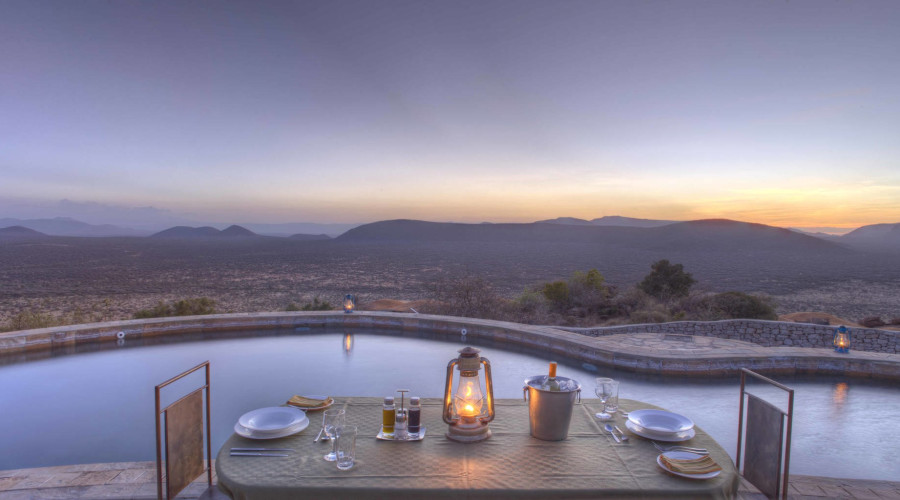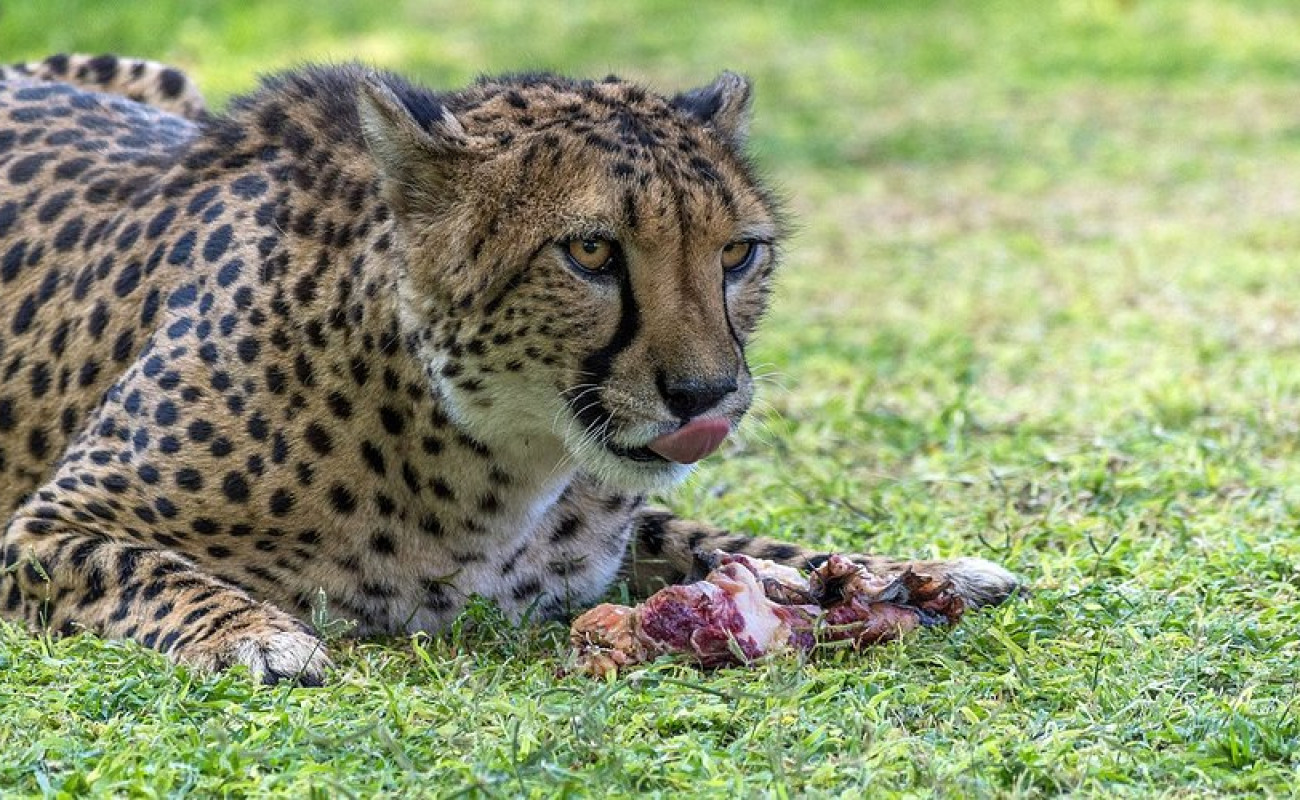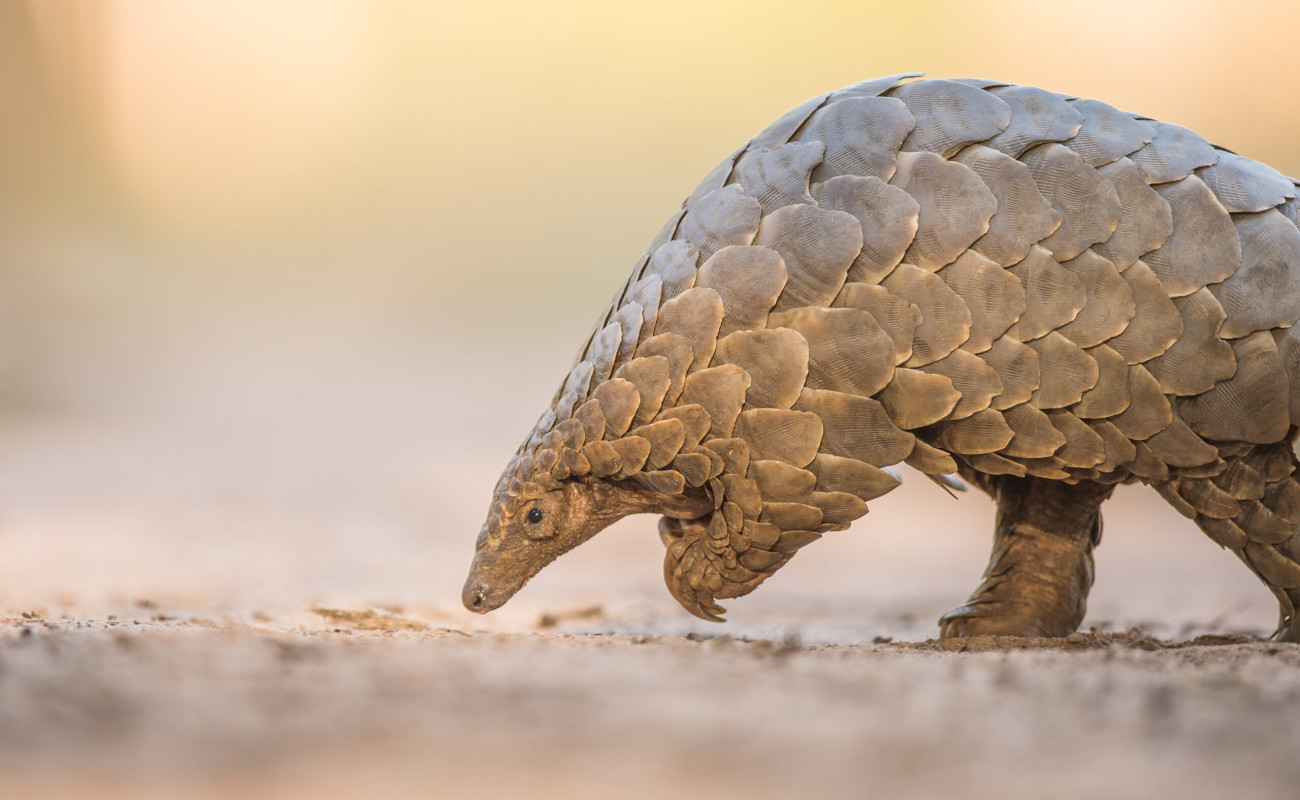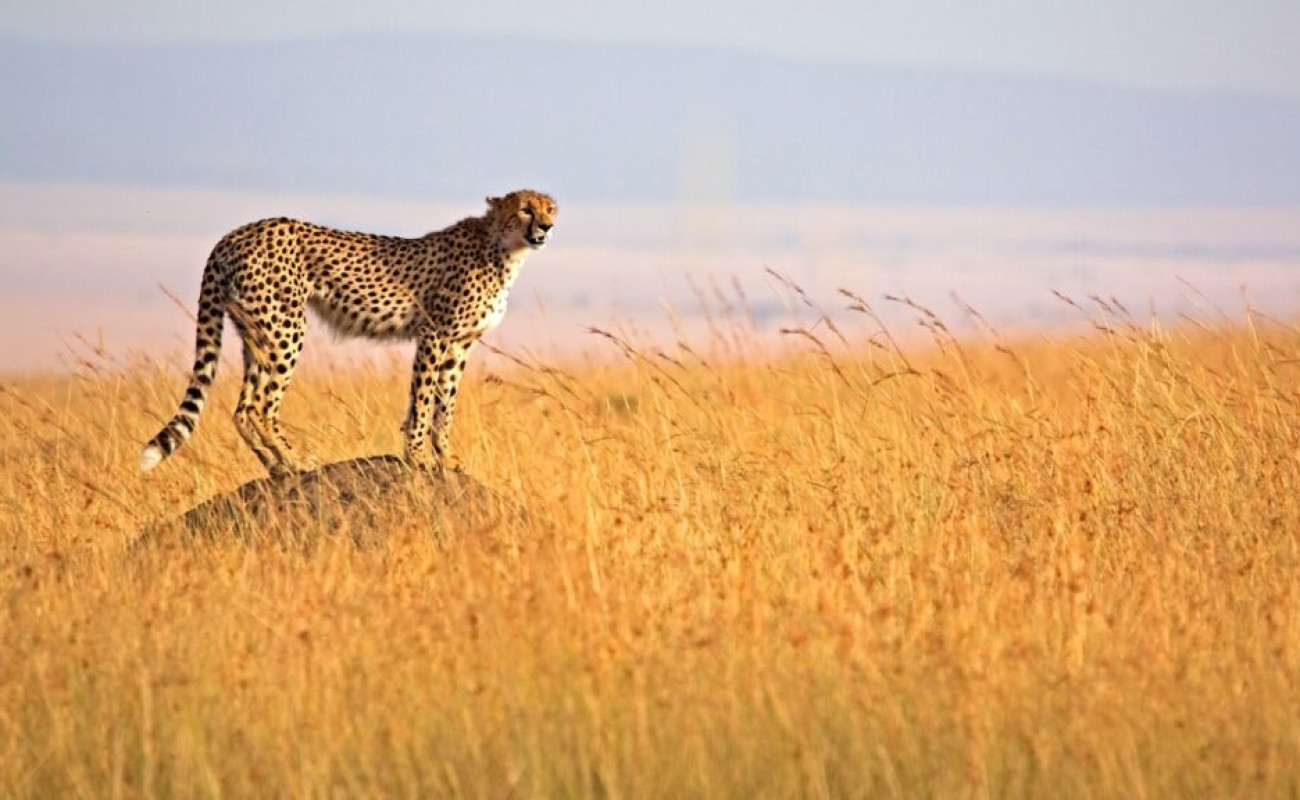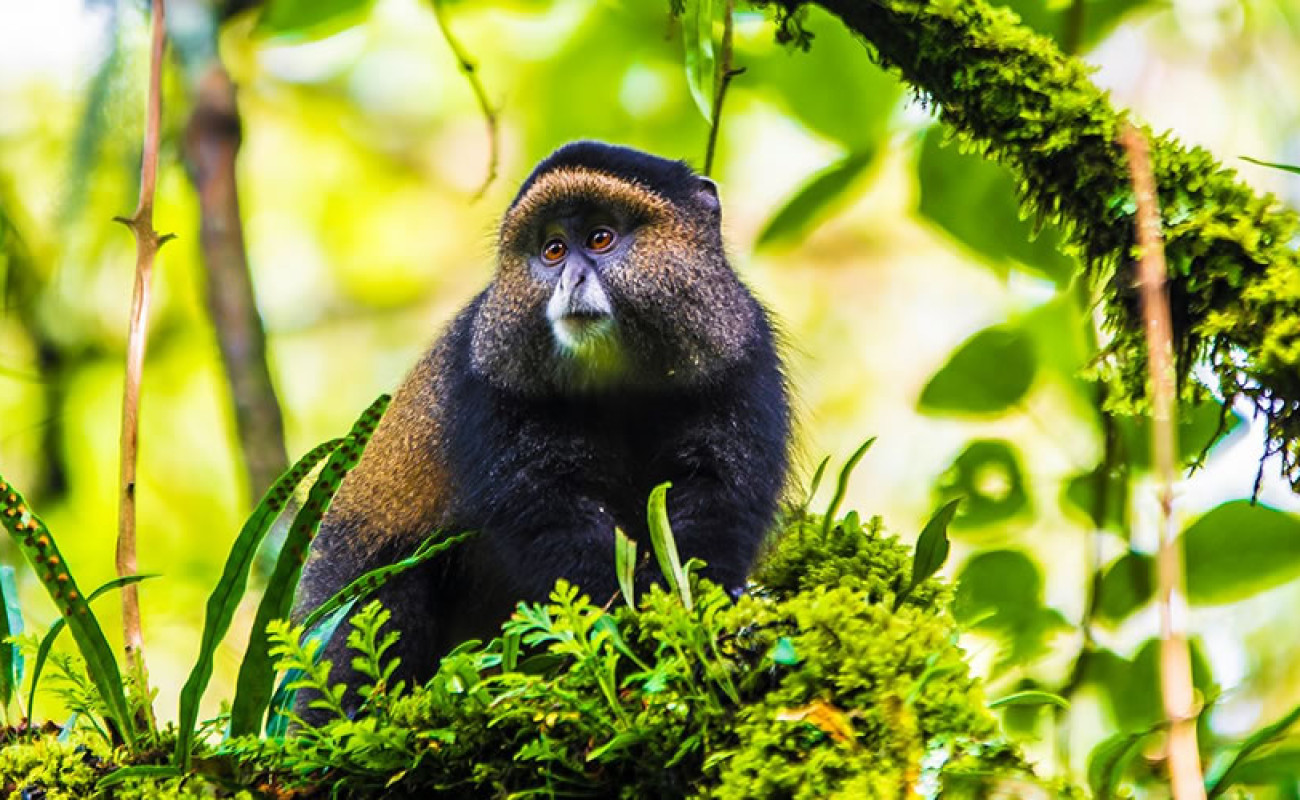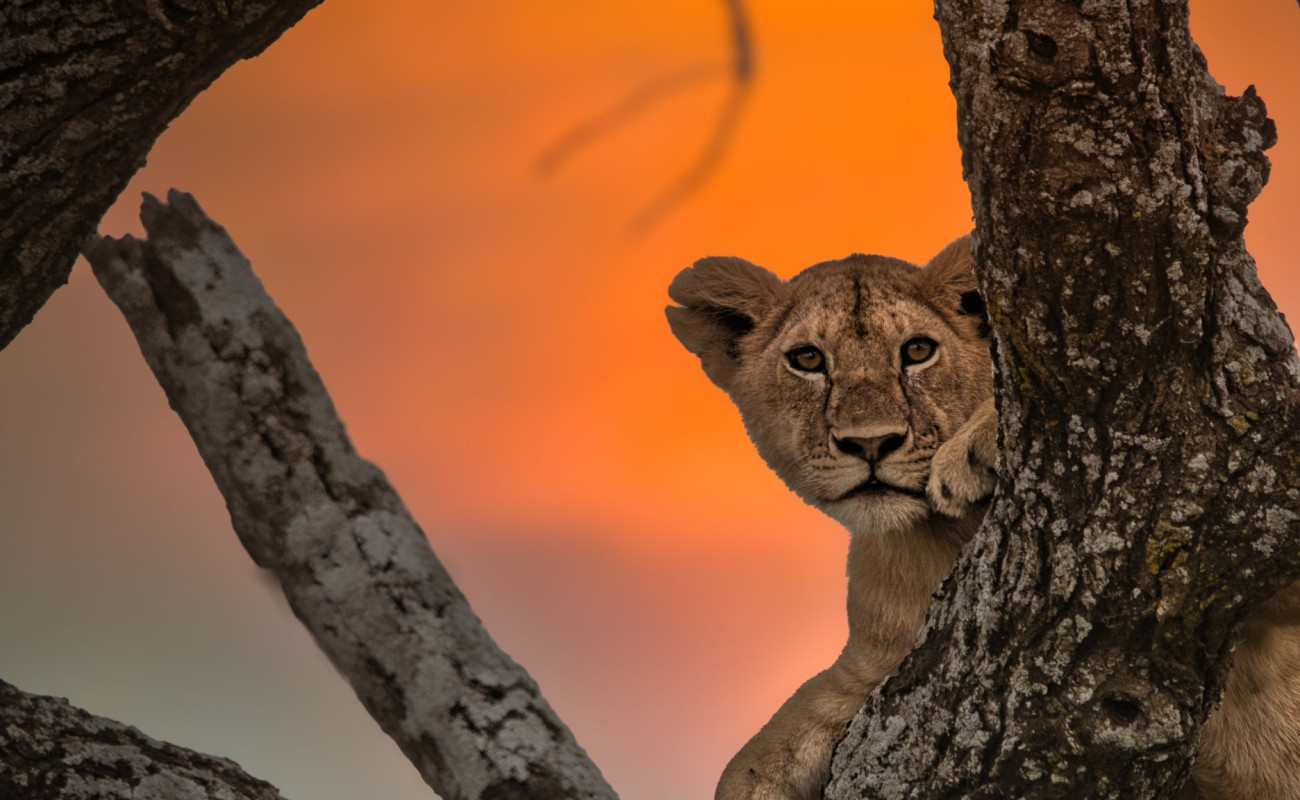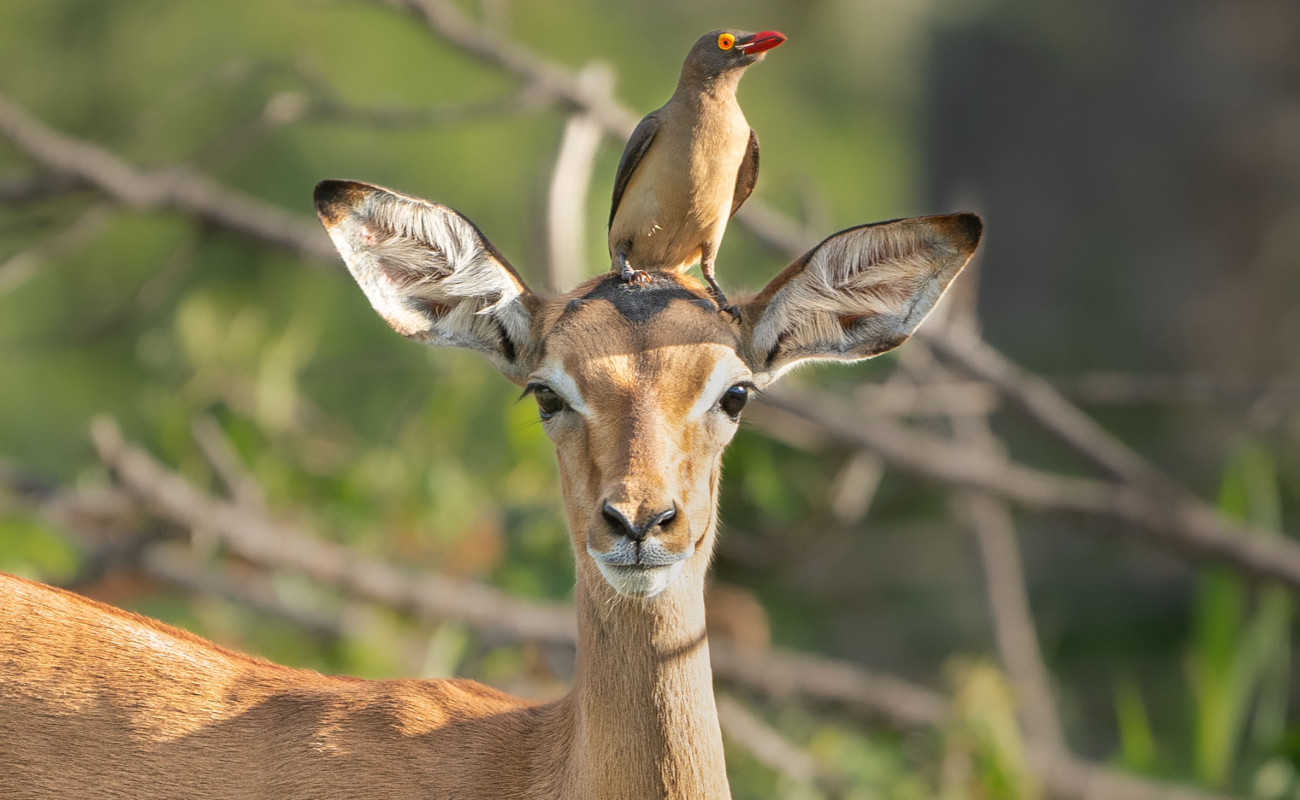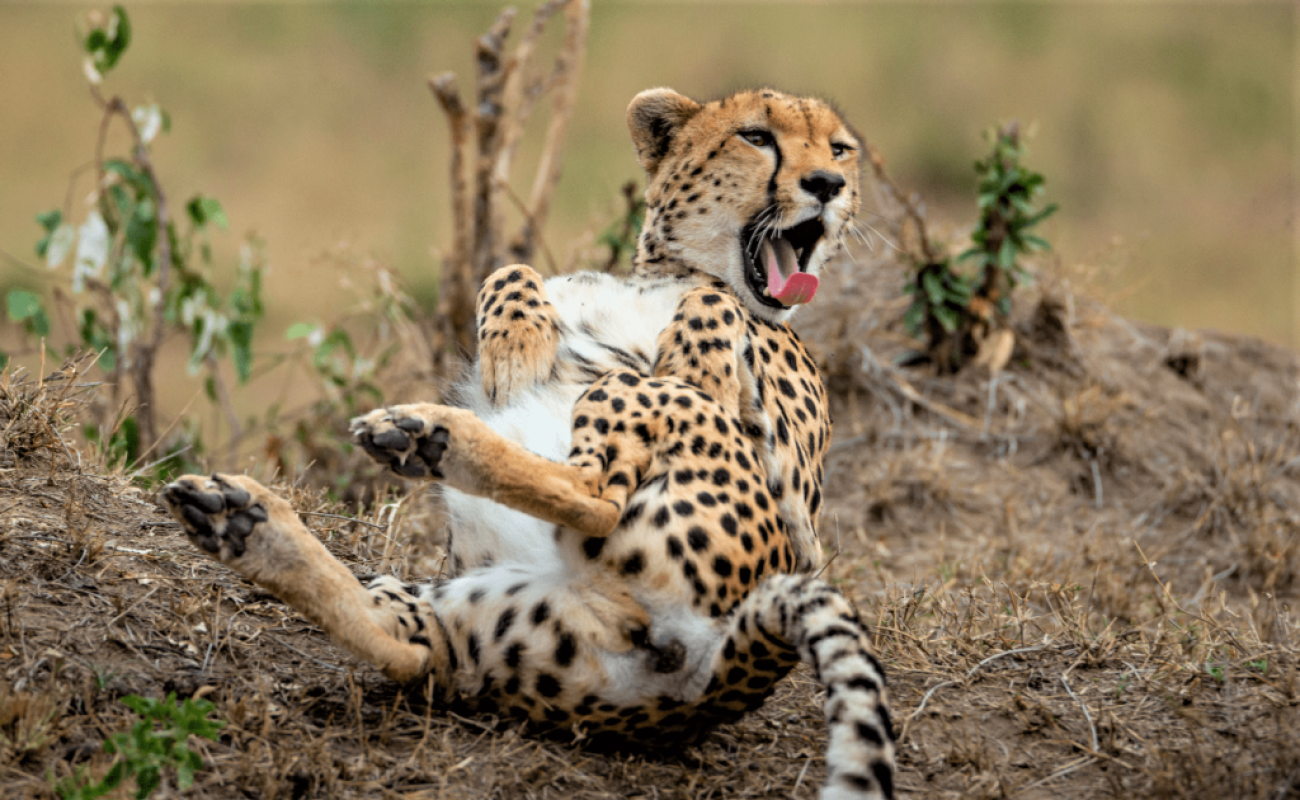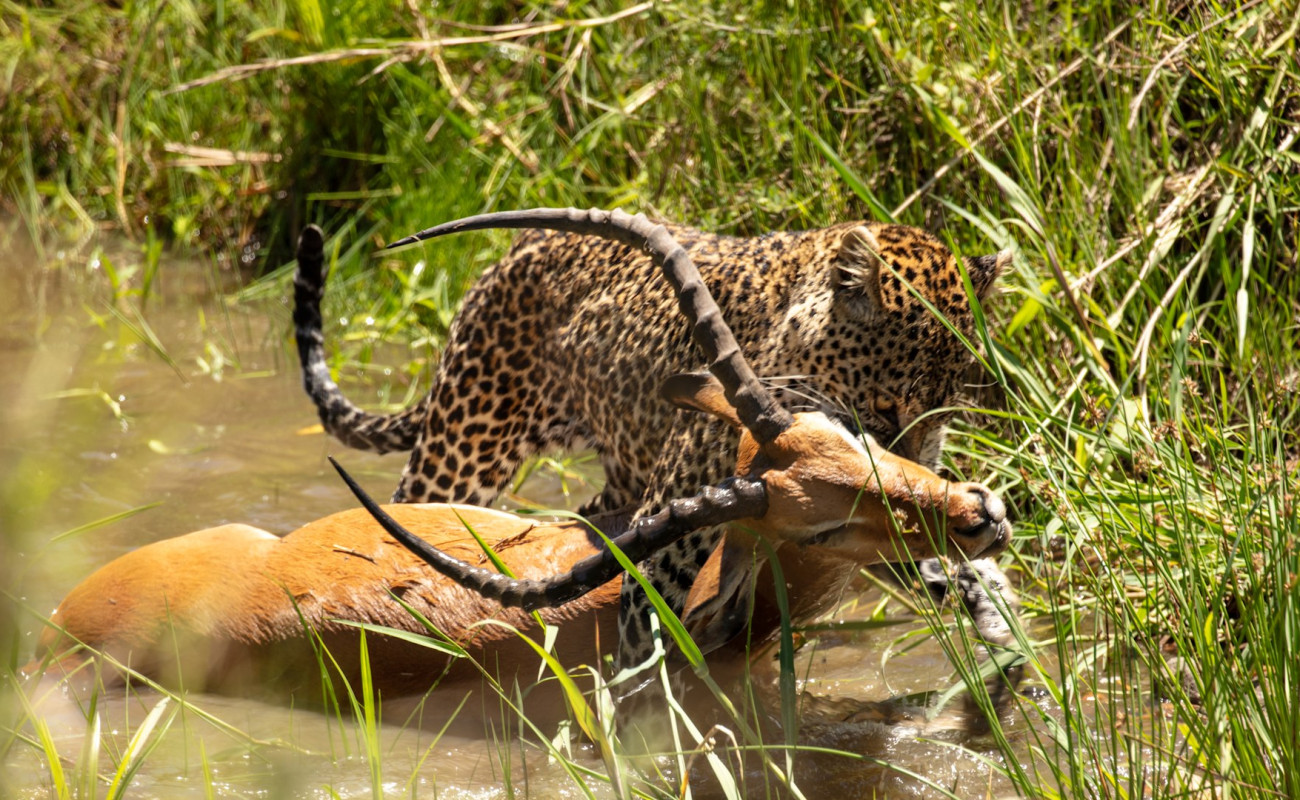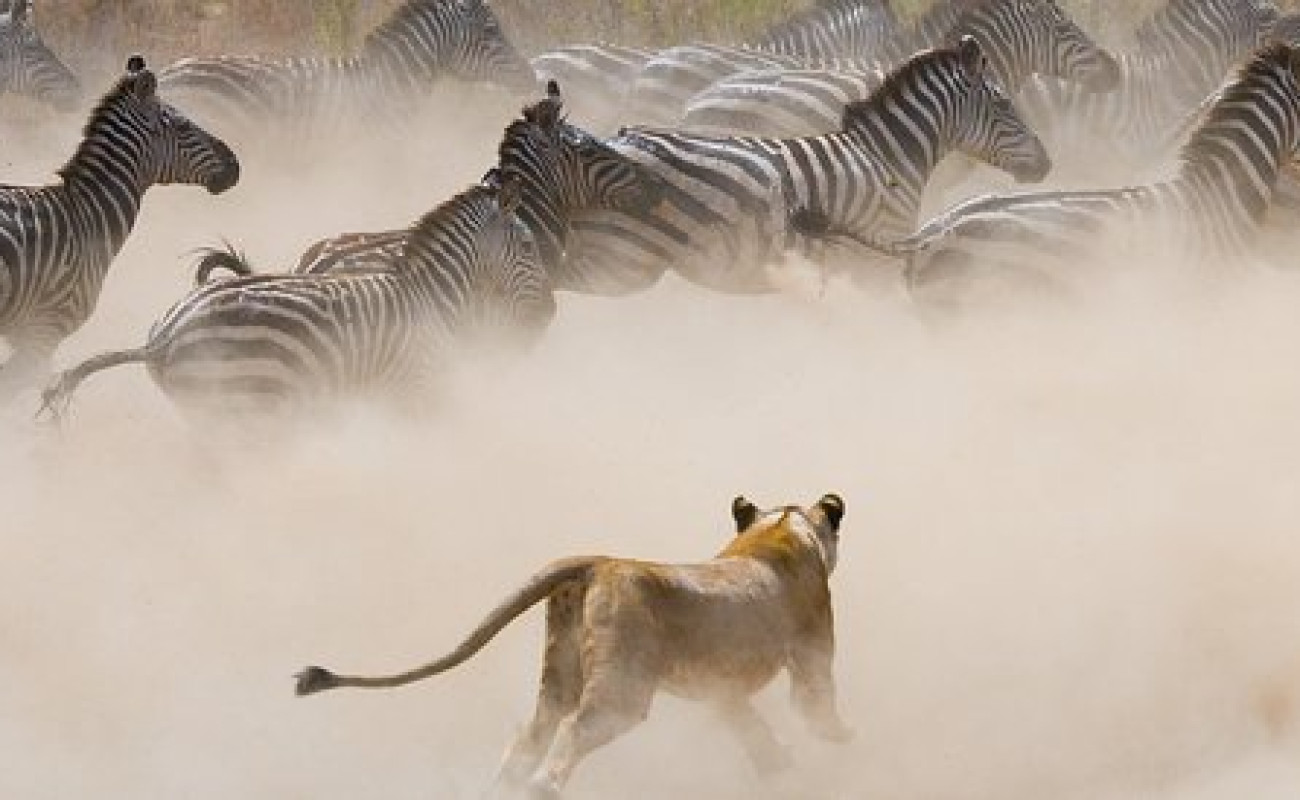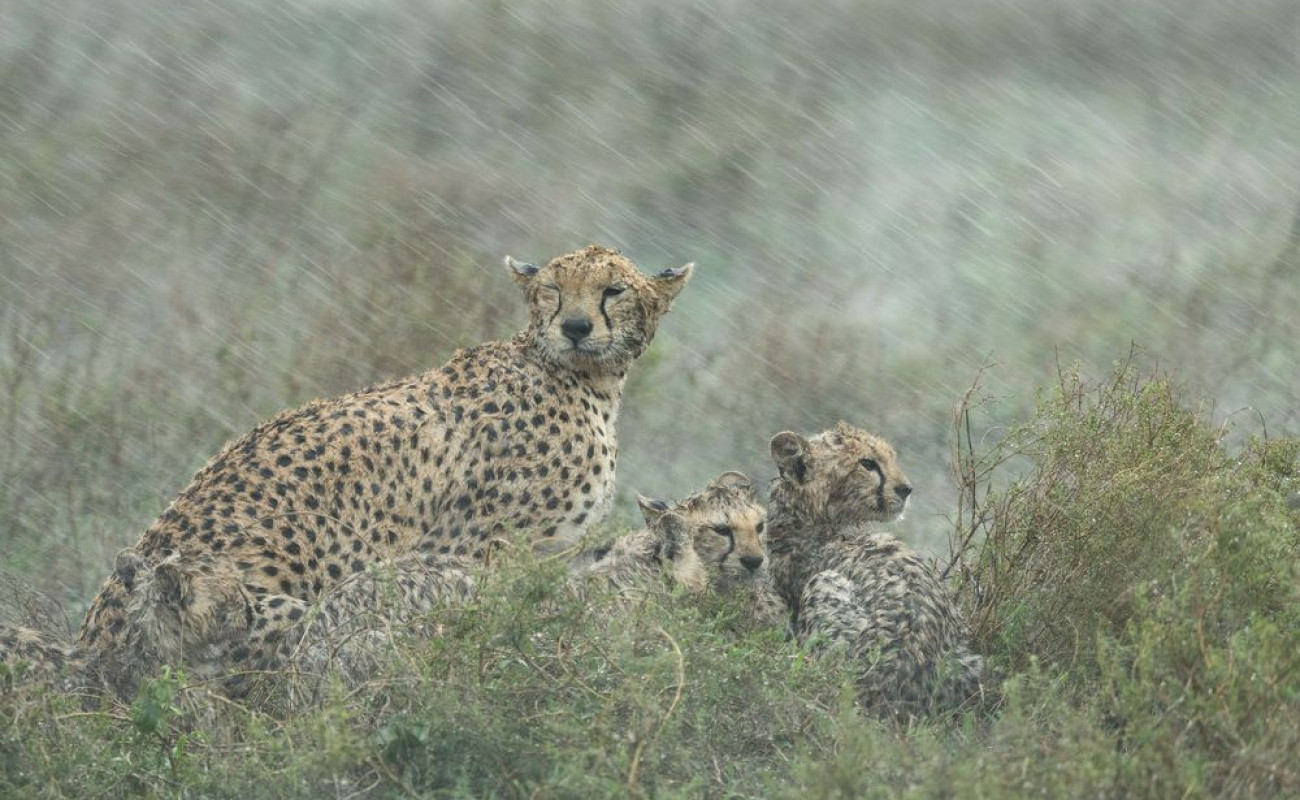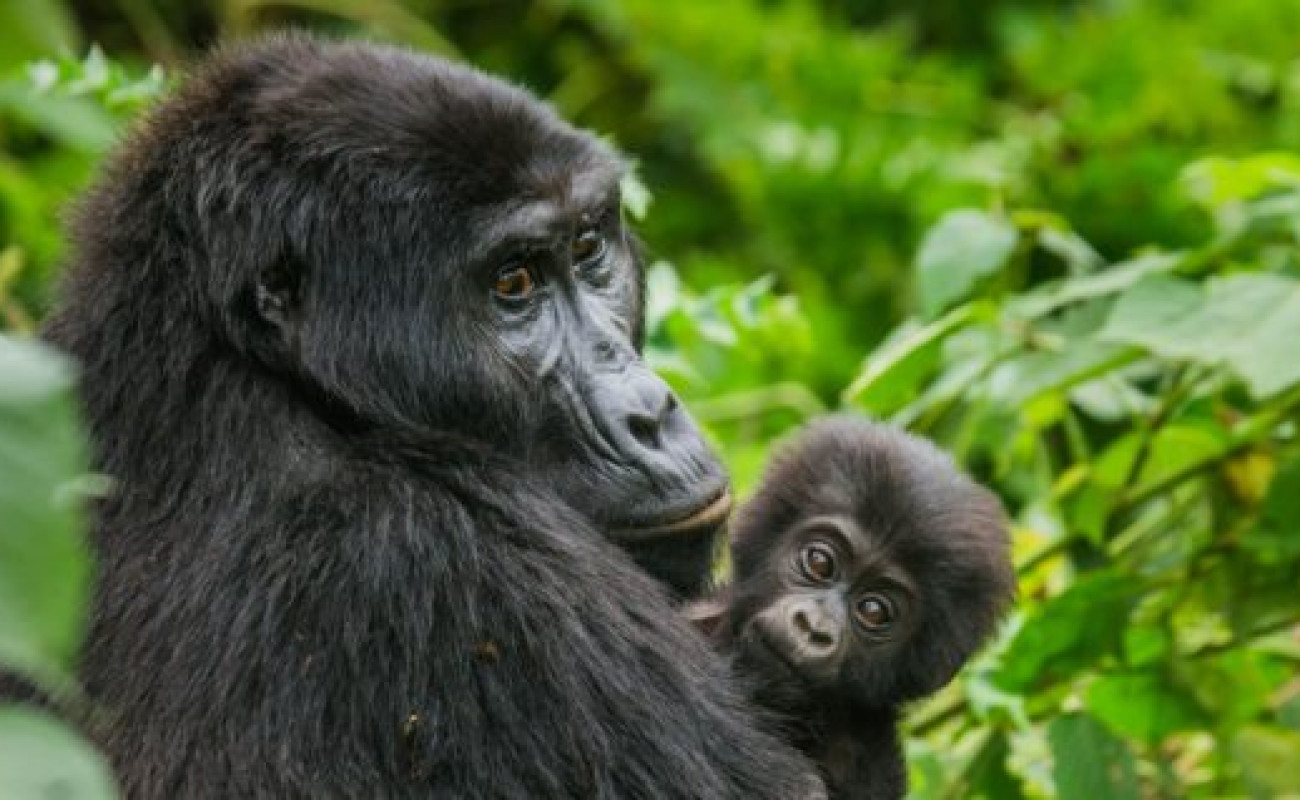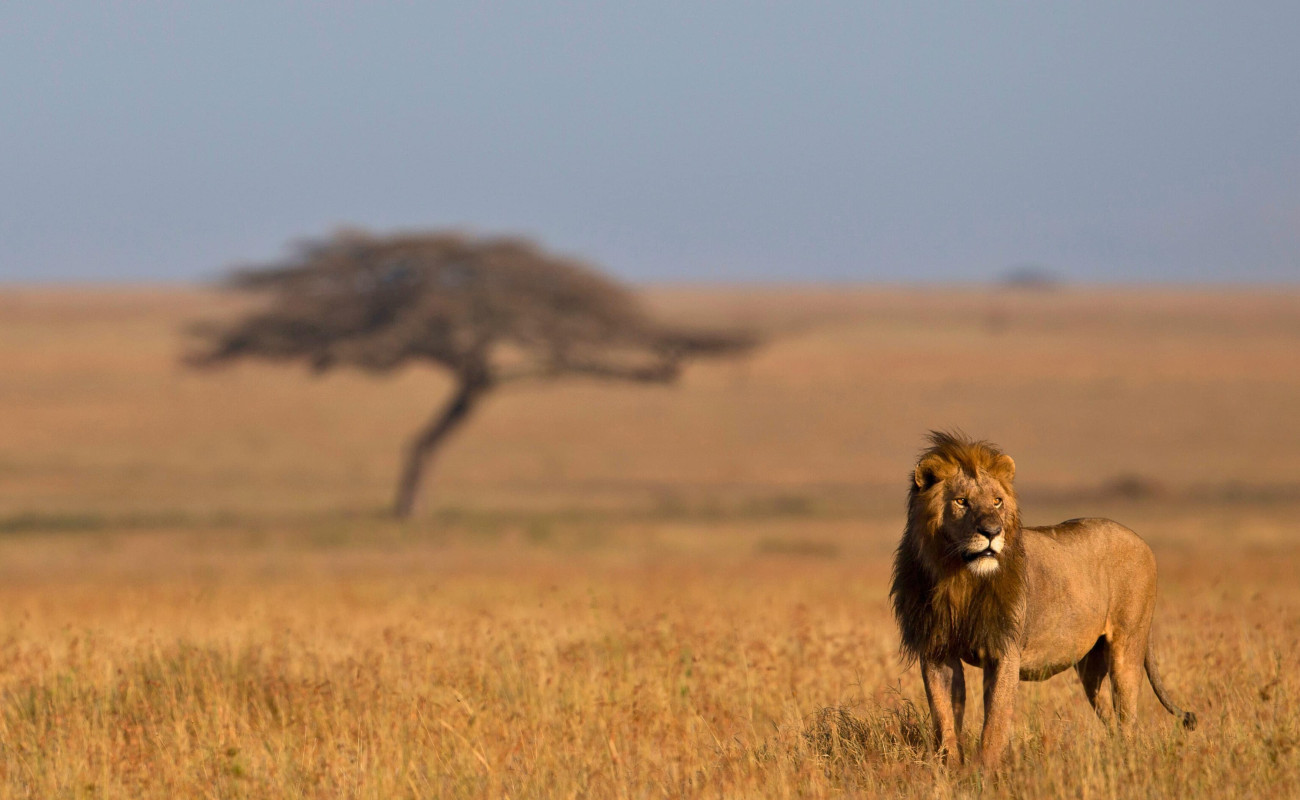1. The “Samburu Special Five” – Only Found Here
Samburu is home to rare and endemic wildlife species that you won’t commonly find in other parks. These include:
- Reticulated giraffe – strikingly patterned and native to northern Kenya
- Grevy’s zebra – with fine narrow stripes and a white belly
- Beisa oryx – desert-adapted antelope with long, sharp horns
- Gerenuk – a long-necked antelope that feeds while standing on its hind legs
- Somali ostrich – with blue-gray neck and legs, different from the common ostrich
These species thrive in Samburu’s semi-arid climate, giving visitors a completely different safari experience from southern Kenya.
2. The Ewaso Nyiro River – A Ribbon of Life
Flowing through the heart of the reserve, the Ewaso Nyiro River attracts a spectacular range of animals, especially during the dry season. Visitors often witness:
- Elephants bathing or crossing the river
- Crocodiles lurking in the shallows
- Lions and leopards drawn to the banks for hunting
- Vibrant birdlife nesting among riverine trees
The river also creates lush oases that contrast with Samburu’s stark, sunbaked hills and acacia plains.
3. Thriving Predator Populations
Despite its remote location, Samburu has a strong presence of big cats, including:
- Lions – often seen lounging under trees or stalking prey
- Leopards – frequently spotted near the river or rocky outcrops
- Cheetahs – using the open savannahs for high-speed chases
These predators thrive thanks to the high density of herbivores drawn to the river’s life-giving water.
4. A Photographer’s Dream
Samburu offers dramatic light, open landscapes, and unique animal behavior that make it a favorite among wildlife photographers. The dry, open terrain and fewer tourists allow for clear, unobstructed shots.
Expect golden sunsets, silhouettes of acacia trees, and intense wildlife scenes set against a backdrop of rugged hills and arid beauty.
5. Rich Cultural Encounters with the Samburu People
The Samburu tribe, cousins of the Maasai, inhabit this region and maintain a rich, traditional lifestyle. Visitors can:
- Visit Samburu villages to learn about their culture and customs
- Participate in dances or ceremonies
- Understand their deep connection to the land and wildlife
These interactions are genuine and deeply enriching, especially for travelers looking to go beyond the safari jeep.
